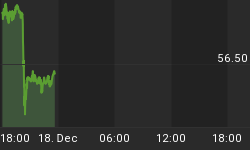For the past three decades, the Federal Reserve has been given a dual mandate: keeping prices stable and maximizing employment. This policy relies not only on the fatal conceit of believing in the wisdom of supposed experts, but also on numerical chicanery.
Rather than understanding inflation in the classical sense as a monetary phenomenon-- an increase in the money supply- it has been redefined as an increase in the Consumer Price Index (CPI). The CPI is calculated based on a weighted basket of goods which is constantly fluctuating, allowing for manipulation of the index to keep inflation expectations low. Employment figures are much the same, relying on survey data, seasonal adjustments, and birth/death models, while the major focus remains on the unemployment rate. Of course, the unemployment rate can fall as discouraged workers drop out of the labor market altogether, leading to the phenomenon of a falling unemployment rate with no job growth.
In terms of keeping stable prices, the Fed has failed miserably. According to the government's own CPI calculators, it takes $2.65 today to purchase what cost one dollar in 1980. And since its creation in 1913, the Federal Reserve has presided over a 98% decline in the dollar's purchasing power. The average American family sees the price of milk, eggs, and meat increasing, while packaged household goods decrease in size rather than price.
Loose fiscal policy has failed to create jobs also. Consider that we had a $700 billion TARP program, nearly $1 trillion in stimulus spending, a government takeover of General Motors, and hundreds of billions of dollars of guarantees to Fannie Mae, Freddie Mac, HUD, FDIC, etc. On top of those programs the Federal Reserve has provided over $4 trillion worth of assistance over the past few years through its credit facilities, purchases of mortgage-backed securities, and now its second round of quantitative easing. Yet even after all these trillions of dollars of spending and bailouts, total nonfarm payroll employment is still seven million jobs lower than it was before this crisis began.
In this same period of time, the total U.S. population has increased by nine million people. We would expect that roughly four million of these people should have been employed, so we are really dealing with eleven million fewer employed people than would otherwise be expected.
It should not be surprising that monetary policy is ineffective at creating actual jobs. It is the effects of monetary policy itself that cause the boom and bust of the business cycle that leads to swings in the unemployment rate. By lowering interest rates through its loose monetary policy, the Fed spurs investment in long-term projects that would not be profitable at market-determined interest rates. Everything seems to go well for awhile until businesses realize that they cannot sell their newly-built houses, their inventories of iron ore, or their new cars. Until these resources are redirected, often with great economic pain for all involved, true economic recovery cannot begin.
Over $4 trillion in bailout facilities and outright debt monetization, combined with interest rates near zero for over two years, have not and will not contribute to increased employment. What is needed is liquidation of debt and malinvested resources. Pumping money into the same sectors that have just crashed merely prolongs the crisis. Until we learn the lesson that jobs are produced through real savings and investment and not through the creation of new money, we are doomed to repeat this boom and bust cycle.















